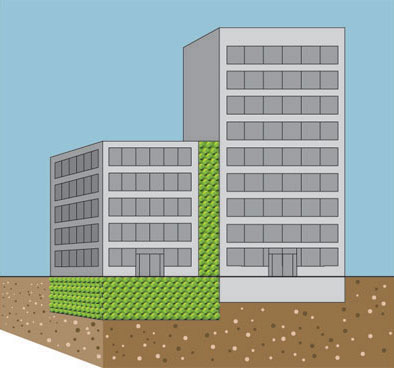
The FlexBlox macro-architecture holds promise in decoupling a building’s structure from the shaking ground and reducing earthquake-related damage through several mechanisms:
- Controlled and reversible ductile properties could allow the material to absorb some of the kinetic energy of the seismic event.
- The ability to enable small, prescribed amounts of six-degrees-of-freedom motion has potential to reduce the magnitude of structure uplift and the velocity of the subsequent impact.
- In response to ground motion, the material might be ‘tuned’ to allow carefully controlled rocking, which in turn reduces the tendency of a structure’s mass to overturn.
- Properly placed FlexBlox ‘pads’ could provide some isolation between adjacent structures that may vary in height and resonant period, thus reducing the tendency of the structures to non-harmonically strike each other.
- When used as a ground-stabilizing layer, Flextegrity’s material could help mitigate damage due to liquifaction and failure of water-saturated sand and/or mud. A single, fully-integrated layer could simultaneously stabilize non-conforming soil, increase load-bearing capabilities, and reduce entrance of water run-off from uphill. To further prevent unwanted soil saturation, the material’s regular open architecture would enable insertion of horizontal perforated pipe into the lattice.
In environments where moist, poorly consolidated alluvial soil directly overlays rmer materials, there is risk that ‘waves’ from seismic events can be further amplified. A layer of an anisotropically designed material has the potential to separate these disparate soil layers, improve drainage of the alluvial layer, absorb kinetic energy, and mitigate resonant frequencies.
